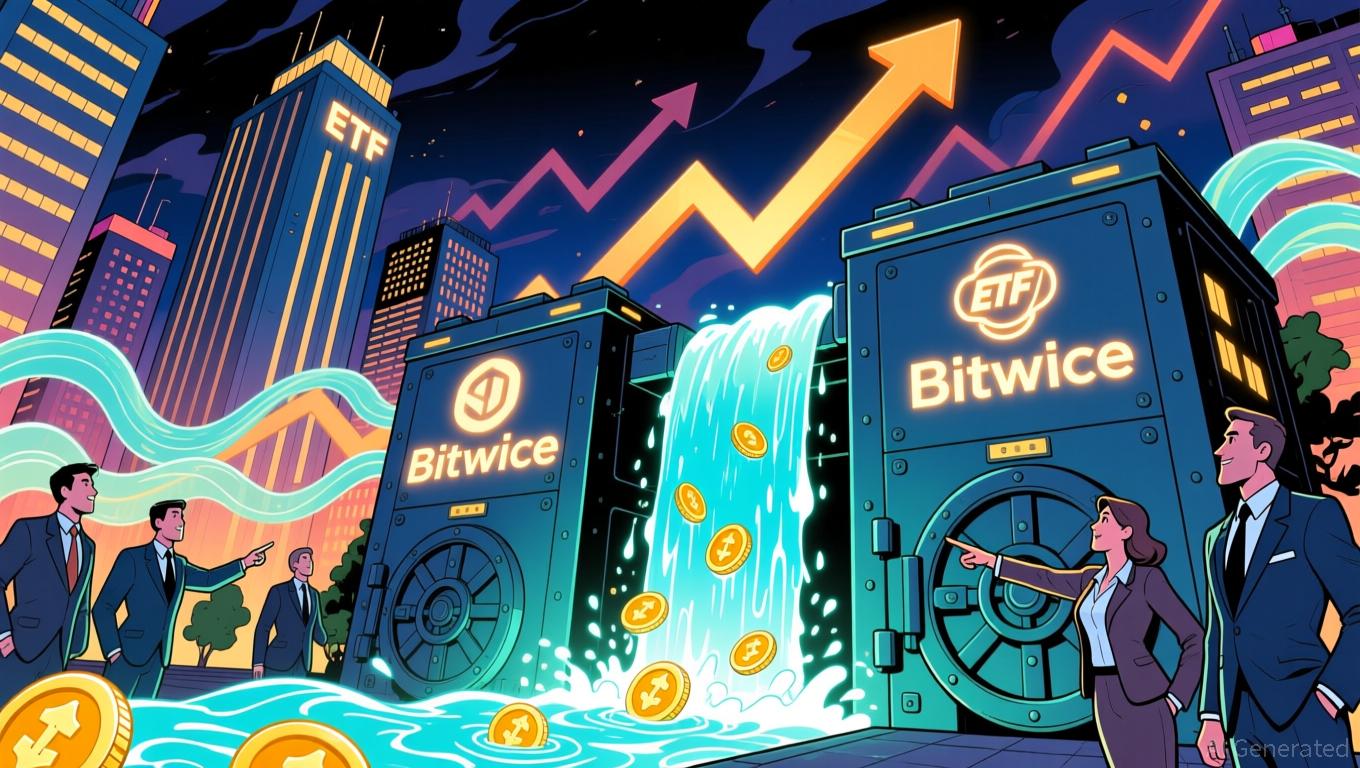Stablecoins: Opportunities for Inclusion Versus Potential Systemic Threats
- Moody’s warns stablecoin adoption in emerging markets threatens monetary sovereignty and financial stability by undermining central bank policies. - Rapid growth of dollar-pegged stablecoins enables capital flight, exchange rate instability, and systemic risks through unregulated cross-border transactions. - Fragmented global regulation exacerbates vulnerabilities, as only 1/3 of countries have comprehensive digital asset frameworks to address stablecoin risks. - While stablecoins offer financial inclusi

Moody’s Ratings has delivered a strong caution regarding the escalating dangers linked to stablecoin adoption in developing economies, stressing the potential impact on both monetary independence and financial stability. The agency pointed out that the rising popularity of dollar-linked stablecoins is diminishing the influence of central bank actions, especially in areas where cryptocurrency use is fueled by inflation, remittance demands, and restricted access to banking. The report noted that by 2024, the number of stablecoin holders worldwide had reached about 562 million, marking a 33% jump from 2023 [ 1 ].
The report explained that stablecoins—digital assets tied to fiat currencies such as the U.S. dollar—are being used more frequently for pricing and settling transactions in emerging economies. This trend weakens the authority over local currencies and disrupts the effectiveness of monetary policy, as these transactions often bypass conventional banks. In regions like Southeast Asia, Africa, and parts of Latin America, stablecoins are commonly used to guard against inflation or to facilitate international money transfers. However, this also introduces systemic risks, such as the possibility of capital leaving the country through anonymous wallets and offshore platforms, which can destabilize exchange rates and expose economies to abrupt financial outflows [ 1 ].
Moody’s further highlighted that stablecoin adoption is heavily concentrated in developing markets, where regulatory systems are often incomplete. Less than a third of nations have established comprehensive rules for digital assets, leaving these economies open to instability and systemic disruptions. The agency cautioned that a lack of proper regulation could lead to reserve runs if stablecoin pegs fail, potentially requiring expensive government bailouts [ 1 ]. In comparison, developed regions such as the U.S. and EU have advanced in regulating stablecoins. The EU’s Markets in Crypto-Assets (MiCA) regulations, which took effect in December 2024, and the U.S. GENIUS Act, which set enforceable standards for stablecoin issuers, are mentioned as examples of proactive measures [ 2 ]. Meanwhile, China is experimenting with yuan-based stablecoins as part of its digital currency initiatives, though it continues to take a cautious regulatory stance [ 2 ].
The agency stressed that stablecoin expansion presents both opportunities and risks. While these digital assets can promote financial inclusion by offering alternatives to volatile local currencies, their swift adoption without sufficient oversight could threaten the stability of banking sectors. In many developing countries, people and businesses are moving their savings from traditional banks to crypto wallets, which could erode bank deposits. Moody’s warned that the absence of unified international regulation makes these risks worse, as fragmented rules fail to address issues that cross national borders [ 1 ].
The report ends by noting that the different reasons for stablecoin adoption—improving financial access in developing countries versus institutional use in wealthier nations—underscore the pressing need for balanced and effective regulation. Without strong oversight, Moody’s warned, the systemic threats posed by widespread stablecoin use could weaken the effectiveness of monetary policy and spark financial instability in at-risk economies [ 1 ].
Disclaimer: The content of this article solely reflects the author's opinion and does not represent the platform in any capacity. This article is not intended to serve as a reference for making investment decisions.
You may also like
The Transformation of Xerox Campus and Webster, NY’s Economic Revival: An Infrastructure-Led Model for Unlocking Value in Industrial Real Estate Markets
- New York's $9.8M FAST NY-funded upgrades transformed Webster's 300-acre Xerox brownfield into a 1M sq ft industrial hub by 2025. - Infrastructure improvements reduced industrial vacancy to 2%, attracting high-tech manufacturers and green energy firms. - The project boosted home prices by 10.1% annually and created 250 jobs via the $650M fairlife® dairy facility. - Public-private partnerships through BOA designation enabled risk-reduced development of contaminated sites. - Webster's model demonstrates inf

Ethereum News Update: ZKP’s Hardware-Centric Strategy Shakes Up Speculation-Fueled Crypto Presales
- ZKP launches with $17M pre-built Proof Pods, offering instant AI compute rewards via Wi-Fi-connected hardware. - Unlike speculative presales, ZKP's hardware-first model ensures operational readiness and decentralized network resilience. - Competitors like Blazpay and SpacePay focus on utility-driven crypto adoption, but ZKP's tiered, upgradable devices emphasize verifiable performance. - Ethereum's gas limit increase aligns with ZKP's distributed compute approach, addressing scalability challenges throug

Solana News Update: Investors Shift Toward XRP ETFs, Bringing Solana's 21-Day Inflow Streak to a Close
- Solana ETFs ended a 21-day inflow streak with a $8.1M net outflow on Nov 27, 2025, led by 21Shares TSOL's $34.37M redemptions. - This reversal contrasted with Bitcoin/Ethereum ETFs' $5.43B outflows and highlighted Solana's 7% staking yields and 70M daily transactions. - Analysts linked the shift to profit-taking, macroeconomic pressures, and investor rotation toward XRP ETFs with perfect inflow records. - Despite the outflow, Solana ETFs still hold $964M in assets, but face challenges as TVL dropped 32%

XRP News Today: Institutional ETFs Drive XRP to Compete with Bitcoin's Market Leadership
- XRP ETFs see $160M+ inflows as institutional demand surges, with Bitwise and Franklin Templeton leading the charge. - NYSE approves Grayscale and Franklin XRP/Dogecoin ETFs amid SEC easing altcoin fund approvals, signaling crypto normalization. - Altcoin Season Index at 25/100 shows Bitcoin dominance, but projects like Aster and Zcash outperform BTC by 1,000%+. - XRP rebounds to $2.06 with 48% volume spike, but 79M tokens absorbed by ETFs raise supply concerns. - Institutional-grade custody solutions fro
